Aspekti Hegelove filozofije
Kronologijski povod kao što je stodvadesetpeta godišnjica Hegelove smrti mogao bi navesti na ono što se naziva ocjenjivanjem. Ali je pojam ocjenjivanja, ako je uopće ikada nešto vrijedio, postao nesnosan.
More...We kindly inform you that, as long as the subject affiliation of our 300.000+ articles is in progress, you might get unsufficient or no results on your third level or second level search. In this case, please broaden your search criteria.
Kronologijski povod kao što je stodvadesetpeta godišnjica Hegelove smrti mogao bi navesti na ono što se naziva ocjenjivanjem. Ali je pojam ocjenjivanja, ako je uopće ikada nešto vrijedio, postao nesnosan.
More...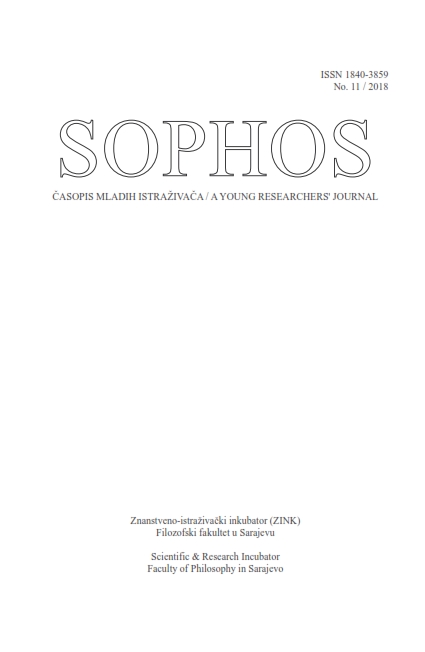
This paper is focused on the analysis of Brandom’s approach to implication and its importance for philosophy of inferentialism. The goal is to show that the implication is the central concept in the philosophy of inferentialism and that it is essential for understanding of inferentialism as an epistemic important position. For this purpose, the paper analyses Brandom’s turn towards material inference which allows the implicative content to expand in the way it takes into account the factual, material conditions and state of things. The paper wants to show that Brandom tries to reject the dogmas of formalism in that way and to turn towards practical discourse and language practices as the only framework where we can relevantly speak about the cognitive and epistemic problems in general.
More...
Der Beitrag stellt den Versuch dar, Hegels Refleksionen über den philosophischen Diskurs zu erörtern. Unsere These besagt, daß Hegels Lehre „spekulativen Satz“ in prägnanter Form und den wesentlichen Momenten die Reflexion (eine Widerspieglung) des Weges seinen eigenen, in der Phänomenologie des Geistes dargelegten Philosophie darstelt. Um die Sache weiter zuzuspitzen: unsere These, die wir zuuntermauern versuchen, läuft nicht nur darauf, daß in Hegels „philosophischem Satz“ das spekulative Wesen der Philosophie aufgezegt wird, sondern vor allem auf den Umstand, daß seine Ausführungen über den spekulative Satz in zusammengefaßter Form die in ihren wichtigsten Momenten dargelegte Philosophie Hegels beinhaltet.
More...
Im Rückgriff auf Hans Leisegangs Lehre von den Denkformen skizziert der Autor in seinem Beitrag die Form; in der sich Hegels Art zu philosophieren niederschlägt. In der Einleitung wird in aller Kürze Leisegangs Theorie vorgestellt, ehe dann im Hauptteil der Arbeit die Beschreibung jener Form gegeben wird, die für Hegels Denken typisch ist. Es wird die logische Struktur dieser Denkform erörtert, neben dieser auch ihre theologisch-metaphysische Motivation und Genese, aber es wird auch auf die Problematik ihrer Rekonstruktion hingewiesen. Nachdem eine konkrete Hegel-Textinterpretation aus Leisegangs Werk wiedergegeben worden ist, wird ein Blick auf die methodischen Besonderheiten des Hegel’schen „Denkstils“ geworfen. Im Schlussteil der Arbeit wird ein Vergleich von Hegels Philosophie und Leisegangs Denkformenlehre vorgenommen mit dem Ergebnis, dass es sich letztlich um zwei „Programme“ mit grundverschiedener Intention, aber auch mit einem gemeinsamen Nenner handelt: Letzterer liegt in der Forderung nach einer ontologischen Fundierung der Logik.
More...
In this paper the author at first describes basic parameters of Pythagorean doctrine, expressed primarily with Aristotle, more precisely the part of which states that “things are numbers”, or that they “imitate” or “represent” numbers, even that Italian thinkers “supposed the elements of numbers to be the elements of all things, and the whole heaven to be a musical scale and a number”. Bearing in mind the fact that according to Pythagoreans the number is the substance of all things the segment of diverse Pythagorean learning of numbers in regard to their view of justice is particularly being considered. Two definitions of justice are in the focus of the author’s investigation: in the first place the one which was negatively formulated from Magna Moralia (1182a11-14), which states that justice is not a square number. Then the segment of Nicomachean Ethics (1132b21-23) is quoted according to which the justice is some sort of reciprocity i.e. they defined justice simply as requital to another. The numerical expression of such definitions later became the subject of confrontation for the commentators, however the analysis has shown that the justice was expressed with at least five numbers. Most frequently the numbers were 4 and 9, but in the literature the numbers 8, 5, and 3 are also being mentioned. The paper, eventually, lists the deficiencies of such identifications, particularly in reference to Hegel’s objections to such determination and emphasizing that, in his opinion, mathematics can not grasp the reality which postulates itself and which exists in its own concept since its relation to the reality is external and nonconceptual.
More...
Durch die Vermittlung von Johannes Daubert und kurze Zeit nach ihrer Veröffentlichung 1900/1901 haben Husserls Logische Untersuchungen, das Hauptwerk der Phänomenologie, eine besondere Rezeption in den psychologischen und philosophischen Kreisen von München erlebt, hauptsächlich im Kreis von Theodor Lipps’ Schülern. Durch die Auseinandersetzung mit den Logischen Untersuchungen Husserls sowie durch die Debatte, die sie mit ihrem Lehrer gehabt haben, haben die Schüler Lipps’ einen eigenen phänomenologischen Kreis gebildet. In diesem Aufsatz versuche ich, die Geschichte der Rezeption von Husserls Phänomenologie in München zu rekonstruieren, mit Berücksichtigung von zwei Schülern Lipps’: Pfänder und Reinach. Ich versuche hier auch zu erklären, in wie fern sich Pfänder und Reinach von ihrem Lehrer nach der Begegnung mit der husserlschen Phänomenologie distanziert haben, obwohl sie Husserls Phänomenologie nicht ohne weiteres übernommen haben.
More...
The present paper is devoted to the contribution of the eminent philosopher and mathematician Bernard Bolzano to the problem of continuum. The paper consists of two parts. In the first part it is compared the conception of Bolzano about the continuum with that of Aristotle. Bolzano’s view includes two essential moments: first, that the continuum is composed of noncontinual elements (points), and second, that two points which are at a certain distance one to other cannot compose a continuum. Aristotle has two definitions about continuity: in the first one he in fact develops the idea of continuity as a physical connectedness, and in the second one he emphasizes the infinite divisibility of the continuum. The second part of the paper gives an evaluation of Bolzano’s contribution to the problem of continuum in comparison with the achievements of the contemporary mathematics on the problem. There is a tendency to consider continuity in two senses: as an infinite divisibility and as a connectedness. The contemporary topology (as a branch of mathematics) develops the concept of continuity in the second sense. Bolzano’s conception bears in some respects the resemblance to the contemporary definitions in topology of the concepts of closeness, neighborhood, isolated point, etc. His definition about the continuum can be considered as a remote precursor of the contemporary topological definition of continuity as connectedness.
More...
The fundamental ontological categories of Aristotle are in language (Cateories, IV 25). They are ontological. Norms are not in this classification. They are not descriptive propositions - they can not be true or false. But the logical tradition is concerned with norms as linguistic entities. It is justified by the ideas of Aristotle. The linguistic approach leads to some theoretical difficulties of the contemporary logic of norms. [...]
More...
Filozofi oštrijeg suda koj i se trude oko ispitivanja prirodnih stvari slažu se u uverenju da moramo sa najvećom brižljivošću da sprečimo da se u prirodnu nauku uvuče ono što je izmišljeno nekim srećn i m obrtom ili na temelju neke nepromišljenosti, kao i da se preduzima bilo šta neizvesno bez saglasnosti iskustva i bez posredovnja geometrije. Sigurno da ne bi moglo da se pretpostavi bilo šta što bi bi lo blagotvornije i korisnije za filozofiju od ove od luke. Pošto, verovatno, jedva da je nekome od smrtnika dopušteno da čvrstim koracima napreduJe na pravom putu istine, a da pri rom tu i tamo ne odstupi u stranu, onda su neki ovaj zakon do te mere razvili da se uopšte više ne usuđuju da se u ispitivanju istine otisnu na puč inu , već smatraju da je zgodn ije da jedre duž obale: oni su dozvoli li pristup samo onome što je neposredno poznato putem svedočanstva iskustva. A zapravo, na ovom putu možemo pouzdano da raščlanimo zakone prirode, ali ne i poreklo i uzroke zakona. Jer, onaj ko samo sledi prirodne pojave, uvek ostaje jednako udaljen od razumevanja prvih uzroka koj i leže daleko, i ism tako malo će da dospe do nauke o prirodi samih tela kao i onaj ko se sve više penje na vrh nekog brda zanoseć i se da će konačno dodirnuti rukom nebo. [...]
More...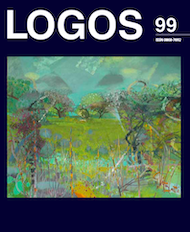
The efforts to explain the other constantly fail. The creation of images reveals the presence of the other who appears both as an excess of any explanation and as a condition for the understanding of the diversity of such images. Even in its denial, such presence demands a dialogical dimension which includes both the explainer and the other. The birth of Western civilization, in its Socratic mode, was profoundly dialogical. Various trends, such as scientism and theology, shifted discourse to monological doctrines. Regardless of the kind of monologue, each claimed to subsume the other in its own logic, depriving the other of equal voice. Yet what is significant is that such a voice was always present – even in its denial. Good examples come from cultural conquests, racisms and colonialisms. Yet the most pronounced monological logic is scientific reductionism to a single ontological base: the fragmenting logic of materialism.
More...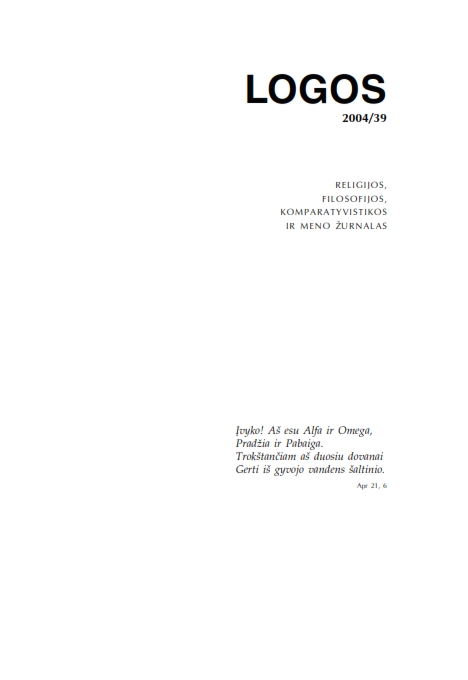
The social theory of knowledge developed by Marx and Engels is unfolded in three steps: (1) by explaining the meaning of dialectic as a form both of thinking and of being; (2) by discussing the anthropological and historical materialism that pervades the original Marxist epistemological perspective; (3) by presenting Marx’s and Engels’ belief that the material means and relations of production determine the existence of society in all respects; (4) by isolating the multiple senses of ideology as they occur in the writings of Marx and Engels and by discussing the various methods of unmasking the hidden agendas of ideologies. Throughout the article, a clear and sympathetic exposition of Marxist social epistemology is combined with an insightful and playful criticism of several inconsistencies that the author of the article finds in Marx’s and Engels’ accounts of things.
More...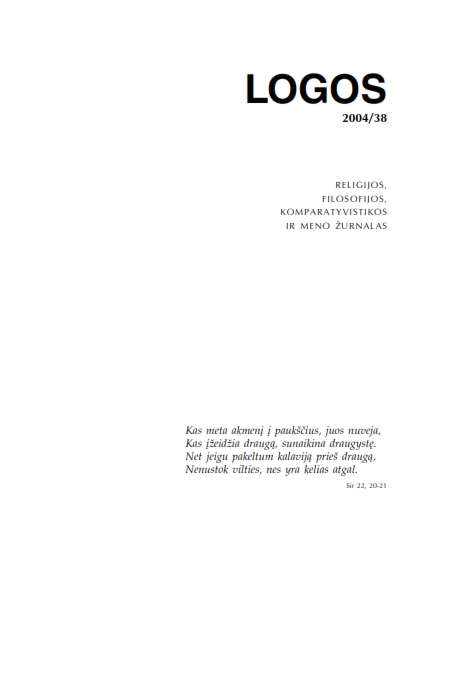
The analysis of the second operation of the human intellect presented in lectures on logics by the main representatives of scholastic logic in Lithuania of the second half of the sixteenth century, Marcin Úmiglecki and Diego Ortiz, virtually belongs to the so-called major logic (logica major). That is, the cardinal object of the above-mentioned analysis was the content of proposition. On the other hand, such an analysis involved some elements of dialectics, or minor logic (logica minor sive dialectica), namely, certain rules of logical square and conversion. Following the Aristotelian-scholastic tradition, Úmiglecki and Ortiz defined the proposition as a correct or false sentence (oratio vera sive falsa). Meanwhile, opposition, equivalence (aequipollentia) and convertibility were regarded as the main properties of proposition (propria propositionis). These properties were also interpreted in the spirit of the scholastic tradition. Úmiglecki and Ortiz traditionally considered necessary propositions the main elements of scientific knowledge. As for the terms of necessary proposition, it was affirmed that neither subject nor predicate ought to bear actual existence. That is, two conditions alone are necessary for these terms: a) there must be at least a logical potentiality (potentia logica) for the existence of a subject (that is, the subject needs not be a contradictory being, such as a circular square); b) such an existence having been assumed, the predicate must be inseparable from the existing subject.
More...
The social theory of knowledge developed by Marx and Engels is unfolded in three steps: (1) by explaining the meaning of dialectic as a form both of thinking and of being; (2) by discussing the anthropological and historical materialism that pervades the original Marxist epistemological perspective; (3) by presenting Marx’s and Engels’ belief that the material means and relations of production determine the existence of society in all respects; (4) by isolating the multiple senses of ideology as they occur in the writings of Marx and Engels and by discussing the various methods of unmasking the hidden agendas of ideologies. Throughout the article, a clear and sympathetic exposition of Marxist social epistemology is combined with an insightful and playful criticism of several inconsistencies that the author of the article finds in Marx’s and Engels’ accounts of things.
More...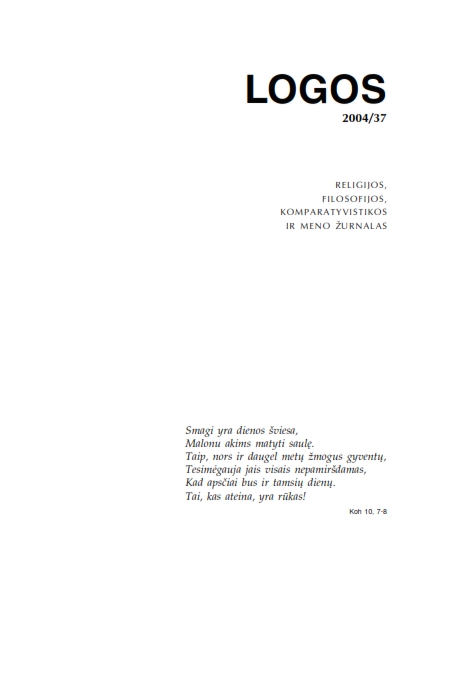
The social theory of knowledge developed by Marx and Engels is unfolded in three steps: (1) by explaining the meaning of dialectic as a form both of thinking and of being; (2) by discussing the anthropological and historical materialism that pervades the original Marxist epistemological perspective; (3) by presenting Marx’s and Engels’ belief that the material means and relations of production determine the existence of society in all respects; (4) by isolating the multiple senses of ideology as they occur in the writings of Marx and Engels and by discussing the various methods of unmasking the hidden agendas of ideologies. Throughout the article, a clear and sympathetic exposition of Marxist social epistemology is combined with an insightful and playful criticism of several inconsistencies that the author of the article finds in Marx’s and Engels’ accounts of things.
More...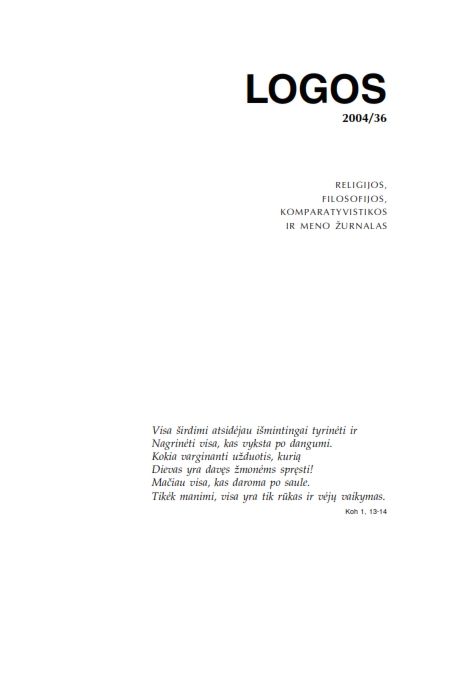
In this article the speculative premises of Scheler’s ethics are considered and the decisive influence of Husserl’s “Logical investigations” on them is shown. Ideas of Husserl, important to Scheler’s ethics, are considered in detail. It is shown that in his ethics Scheler supplanted Husserl’s intellectualism by the “commitment to the world”. He regarded Husserl’s theory as having the “remnants of ill-feeling towards the world”. Scheler’s concept of “ordo amoris” is analyzed as the most characteristic sign of his rejection of Husserl’s phenomenology.
More...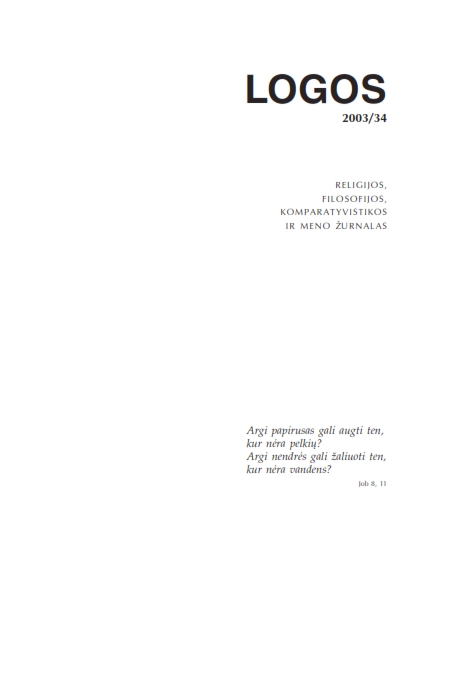
The philosopher and theologian Peter Abélard (1079-1142) was the first Medieval thinker who exposed human subjectivity as material for contemplation and the foundation for knowledge acquisition. According to M.-D. Chenu, this way Abélard awakened medieval consciousness. He contributed considerably to metaphysics, logic and ethics, and took an active part in the famous discussion concerning universals, enriching it by several questions: What is there in things which enables us to give them common names? If there are no actually existing universals, what do common names designate? If the things signified by universals cease to exist, would their names still mean the notion we have of these things? etc. He gave a new basis to ethics by valuing the intentions more than the results. An intention which itself is good can have as its effect a deed bad in itself, or inversely; but the moral act which a good intention dictates is always a good act, just as the one a bad intention dictates is always bad. But his most controversial achievement was bringing dialectics in theology in order to check the dogmas of the Church.
More...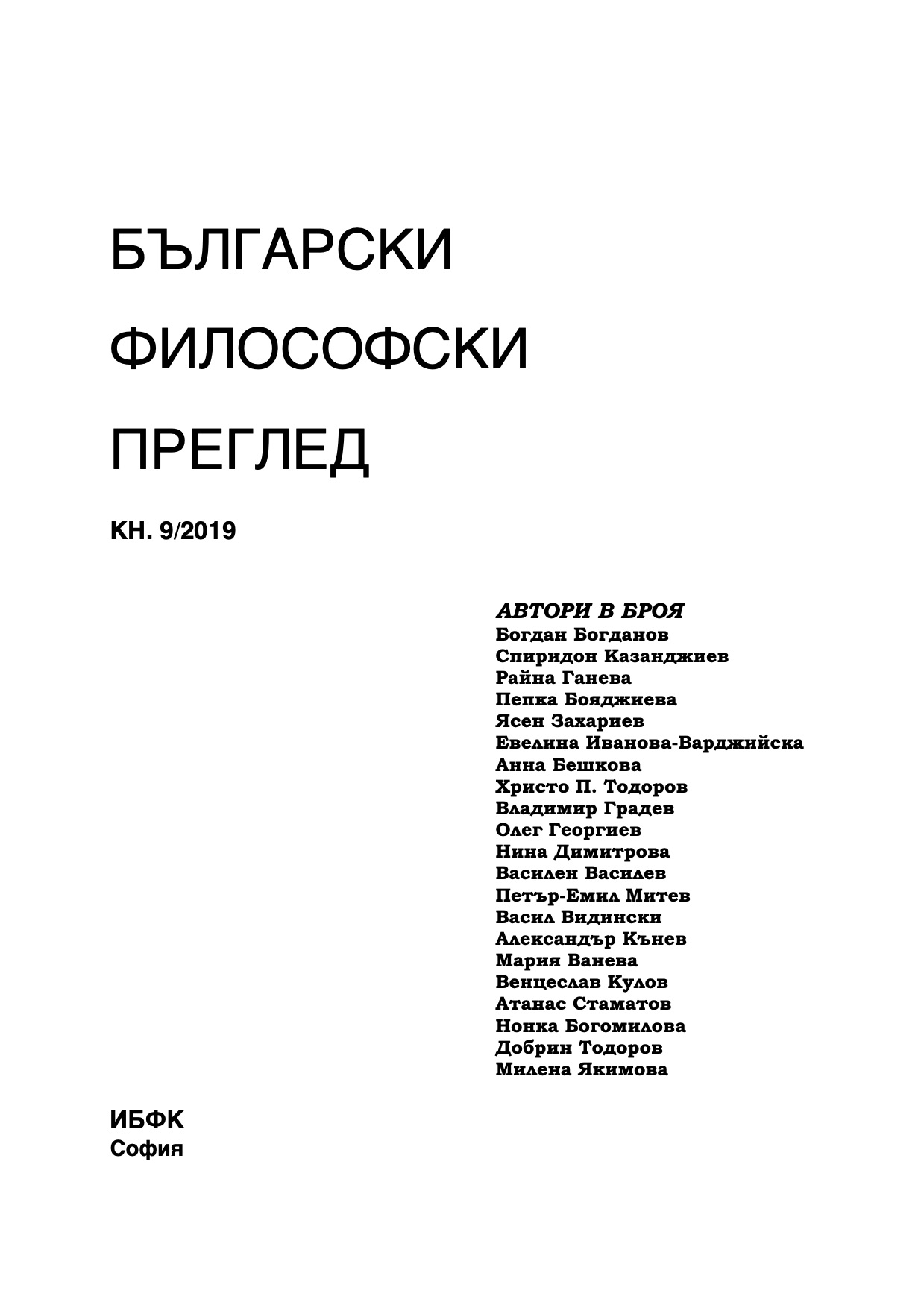
The paper discusses the establishment of "Civic Education" as a new subject at Bulgarian secondary school this year. The discussion focuses on the question of subject's public legitimation and its major goal. Claiming that Civic Education is a phenomenon of the Modern World I offer a brief historical sketch. It outlines those long term processes that feature the Modern World - secularization, industrialization, urbanization, democratization etc. After a short description of the current state of Civic Education I sketch three existing models of Civic Education - patriotism, participatory republicanism and autonomy. Eventually I make the conclusion that the conception of the new subject "Civic Education" combines elements of later two models. The major goal of "Civic Education" at Bulgarian secondary school consists of two components - understanding of the complexity of Modern Social World and building of Civic Capacity.
More...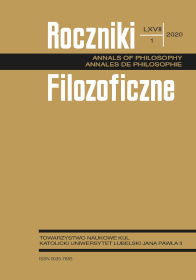
An article is an introductory analysis of concept of religious belief in the language of logic. In its first part, there is a comparison of the concept of religious belief with the concept of scientific belief, next part is a presentation and analysis of Bocheński’s conception of rationality of religious beliefs (and their justification), and the third part of article is an attempt of analysis of Aquinas conception of faith (in Sth II-II) in the light of contemporary logic.
More...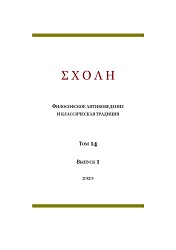
The paper tests the methodology of architectural and ethnographic research of the object of material culture-a masterpiece of world architecture of the Roman Pantheon. The method involves performing the proportional-metrological analysis of the forms using the results of three-dimensional laser scanning. The sequence of actions allowing receiving extremely reliable dimensional drawings of necessary elements of an architectural monument is presented. The analysis suggests that the design metrological module of the Pantheon was a Roman foot of 0.445 m. A detailed analysis of the size of the rotunda plan made it possible to confirm the hypothesis that the design was based on the use of an integer analogue of the number "PI" - fraction 22/7. In addition, an integer right triangle 5: 12: 13 could be used to construct the right angle and to determine the basic proportions of the elements of the facade of the portico. Apparently, in the process of designing the forms of the Pantheon, the method of harmonizing elements on the basis of the similarity method with a change in their scale was used
More...
This paper discusses the system of the pictorial depth representation, typical for Giotto and other Italian artists of 14th century. Differing from the linear perspective, this system has a number of peculiar features, and its own consistent logic for the formation of pictorial space. The paper is especially focused on the contradictions of such a system, which lead to the appearance of impossible figures, and the ways in which the artists solved these difficulties.
More...